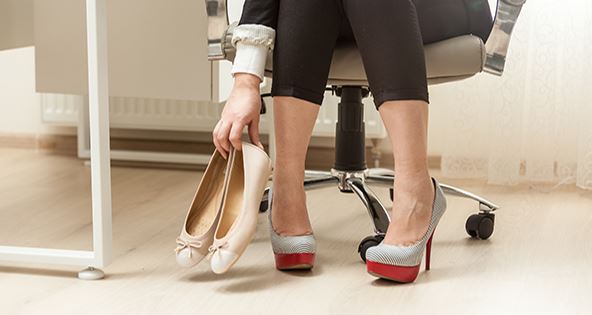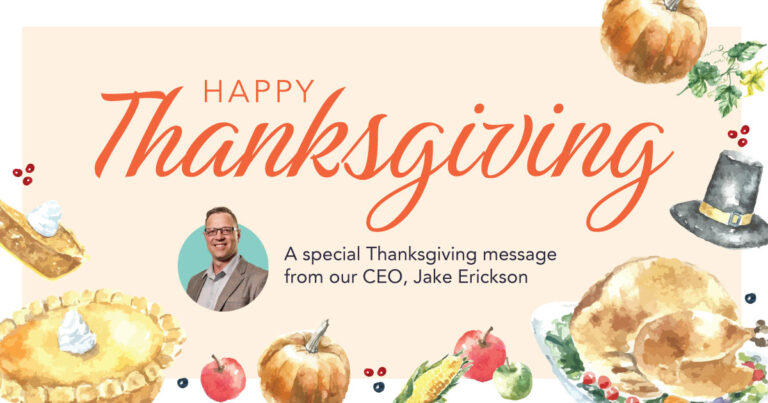
Back on Track
Simple changes at home, at work and on the go can prevent major back pain
You don’t think twice about lugging a laptop to the office, crashing on the couch to watch a movie, or hitting the town in high heels. But these activities are a major cause of back pain. In fact, for 80 percent of adults who experience at least one episode of disabling back pain, lifestyle is often to blame.
Preventing backaches—or keeping a minor twinge from becoming a major pain—can be as simple as tweaking your daily routine.
At the Office
“Sitting all day is a major cause of back pain,” explains Robert Johnson, DO, a fellowship-trained orthopedic spine surgeon with the Idaho Back Institute at Bingham Memorial Hospital. “We often have poor posture when we’re sitting and that strains back muscles and can cause tight muscles and backaches.”
To minimize your risk, sit in a chair with lumbar support, keep both feet flat on the floor and look for opportunities to stand up and move around. Dr. Johnson suggests talking to co-workers face-to-face instead of sending emails.
“You should aim to get up and walk around for at least five minutes every hour,” he says.
If possible, trade a traditional desk for a standing workstation. It’s easier to keep your spine in proper alignment when you’re standing. In one study, participants who used standing desks reduced upper back and neck pain by up to 54 percent.
At the Gym
Kudos for hitting the treadmill. Exercise is effective for reducing lower-back pain because it strengthens muscles and helps stabilize the spine and improve flexibility, protecting against injuries.
Dr. Johnson notes that tight hip flexors and weak abdominal muscles—both common in adults who spend more time on the sofa than on the elliptical machine—increase the likelihood of experiencing back pain.
“If you’re not physically active, you’re putting yourself at risk,” Dr. Johnson says.
Dr. Johnson recommends at least 30 minutes of exercise three times per week. Your workout should include cardio, strength training, and stretching. (It’s a good idea to do a five-minute cardio warm-up before stretching; the risk of pulling a muscle increases when muscles are cold and tight.)
Need another reason to lace up your sneakers? A regular exercise routine decreases the likelihood of reinjuring your back and reduces the risk of disability caused by back pain.
In the Kitchen
You already know that your diet affects your health. It’s true for back pain, too.
“Nutrition plays a huge role in pain,” Dr. Johnson says.
Dr. Johnson cites the connection between back pain and foods that cause inflammation, including sugar, wheat, and starches. Instead, choose foods like citrus fruits, leafy greens, tomatoes, and salmon, which help reduce the risk of inflammation.
When it comes to back pain, there’s another reason to make healthy choices in the kitchen.
“Maintaining a healthy weight is essential for good back health,” Dr. Johnson says. “If you’re overweight, it makes you more vulnerable to muscle strains and sprains.”
A healthy diet also promotes strong bones. Choosing foods high in calcium and vitamin D such as milk, whole grains, and leafy greens can reduce your risk of developing osteoporosis, which, as a bone-thinning disease, can affect your posture and cause back pain.
In the Bedroom
Good sleep habits are essential for promoting good back health. The problem: It’s difficult to get comfortable and slip into a restful slumber when your back aches.
Research shows that how you sleep can have an effect on pain. At night, sleeping on your back or side (with a pillow tucked between your knees to keep your spine in alignment) helps protect against back pain. Your weight is more evenly distributed, which reduces pressure on your spine.
In contrast, sleeping on your stomach places pressure on your lower back.
The mattress you sleep on is just as important as the position you sleep in. Research published in the Journal of Chiropractic Medicine found that sleeping on a medium-firm mattress helped reduce back pain by up to 48 percent. The reason: A firmer mattress offers more support, keeping the spine in alignment.
On the Go
High heels and heavy bags or purses might be on trend, but high fashion sometimes takes a toll on your health. High heels increase the curve of your spine and cause your pelvis to tip forward, increasing the risk of lower-back pain. The weight of your purse can throw your body off balance, straining the muscles in your back.
Swap those heels for shoes with proper arch support, Dr. Johnson says.
When it comes to your handbag, rethink how much weight you’re carrying around. If a big bag is a must, a backpack is the most back-friendly option. If the collegiate accessory cramps your style, Dr. Johnson suggests carrying a cross-body satchel that distributes the weight more evenly. And remember to switch it up.
“If you always carry your bag on the same shoulder, you’re even more vulnerable to back pain,” he says.
About Robert Johnson, DO
Dr. Johnson is a fellowship-trained orthopedic spine surgeon, with the Idaho Back Institute at Bingham Memorial Hospital (BMH), who treats people with a wide variety of spinal conditions of the neck and back. His primary goal as a physician is to help patients obtain some relief from their ailments so they can keep doing what they love, and he strongly believes in exhausting all conservative means to treat a wide variety of spinal conditions of the neck and back before suggesting surgery.
He also specializes in several areas of spine surgery, including cervical and lumbar spinal arthroplasty, which are surgical procedures that involve removing damaged or degenerated cervical or lumbar discs and replacing them with an artificial disc device.
If you’re suffering from chronic neck or back pain, you can schedule an appointment with Dr. Johnson at: (208) 235-2277. Se habla Español
Return to Articles


